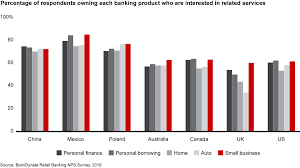By Emma Isichei, Worldwide Category Director, Capture Solutions at Kodak Alaris
Retail banks in the Middle East have done a commendable job of automating their customer-facing systems in recent years. Foremost examples are large ATM networks or a newly launched smart device app. However, there are hidden lingering problems that automation hasn’t fully addressed: a handful of manual, paper-based systems in the back office.
These legacy manual processes undermine the pursuit of efficiency and productivity in a number of ways:
•They’re costly. Using people to handle a routine task—think new account opening or loan application processing—will always be more expensive than an automated solution.
•They’re error-prone and inconsistent. It’s nearly impossible to ensure manual processes will be consistent across the enterprise. Double-checking data and resubmitting documents after errors are found adds costs and directly affects customer satisfaction.
•They can’t scale. Software platforms can handle hundreds, thousands or millions of transactions with a modest, incremental increase in resources.
•They’re slow to adapt. Updating a manual process always requires, at a minimum, producing new or updated manuals and training existing personnel. Plus, there’s an inevitable increase in errors as new procedures are adopted.
•They can’t be optimized quickly. Unlike manual processes, software-based ones can be analyzed in real time and iteratively improved. This makes them faster at responding to changing business models or customer needs.
Make no mistake: A scanner in the back office alone won’t solve these thorny issues. Unless integrated with other applications and business workflows, scanning and copying is an inefficient process. Plus, simple scanning doesn’t make the valuable information in business documents available to other applications. It just digitalises it. Finally, if scanned information ultimately has to be re-entered by hand, another manual process is born, which undercuts the goal of seamless automation.
Manual Madness
The downsides of manual labour include the fact that it is more expensive than automated processes, prone to error, not scalable, difficult to adapt and slow to optimize.
One of the biggest blind spots for banks with regard to manual processes is how costly they can be to customer satisfaction. Manual processes that directly impact communication with customers take time. These delays allow customers to consider other options.
The faster banks can on-board a new customer, the higher their new customer retention rate. In addition, leaving a customer alone to wait for a customer service agent to manage a document process on a device in the back office also presents a security concern.
The nagging persistence of manual systems in retail banking has been exacerbated by waves of mergers and acquisitions in the banking sector, leaving many companies with a hodgepodge of conflicting systems.
Banks need to automate as many routine tasks as possible to reduce costs and human error, and to increase agility, responsiveness and importantly today, compliance. For this they need an information management solution that is a combination of hardware (scanners) and intelligent capture software that provides a way out of this manual madness.
The software solution needs to be embedded within business applications and/or be presented on any desktop PC with a browser so that users can scan, index and send data to existing workflows. This way, document capture for e-docs, PDFs, Word, Excel, PowerPoint, email attachments and more becomes part of the existing workflow, rather than a new application users must master.
Web-based information capture technology using a graphical user interface, also known as GUI, can be made available to many more employees, enabling easy scanning and indexing for everyone—remotely or locally—while being centrally managed. And as a chain of custody for documents—documents should be deposited directly in a business repository, assuring an accurate audit trail and data management compliance.
Speed and accuracy result in higher customer satisfaction and lower support and staffing costs. With manual tasks in the back office a thing of the past, valuable staff hours can instead be spent pursuing additional revenue opportunities or developing new products. This shift can not only improve employee morale, but can also help boost the bottom line.






